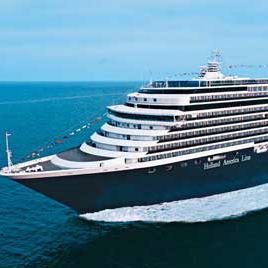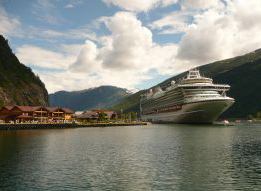 If you watched Peter’s cruise special on CNBC last night, you’ll know that cruising is a big business.
If you watched Peter’s cruise special on CNBC last night, you’ll know that cruising is a big business.
We’re talking a $30 billion industry, in which ships need to be filled to a whopping 104 percent capacity in order to stay afloat.
However, with the economy in the dumper and people spending less than ever on travel, the cruise industry, like the airline and hotel industries, is watching the bottom line and making adjustments to turn a profit.
Two of the biggest cruise lines recently reported all-time-high booking levels in February, in large part due to huge discounts and massive media promotional efforts. Carnival Cruise Lines and Princess Cruises both reported 6 to 10 percent increases in 2009 “wave season” bookings, compared to the same January-March period last year.
But to offset the revenue losses that go along with super-low prices, the big industry players are revamping their operations and reconsidering their routes and itineraries.
For example, both Royal Caribbean and Carnival Corporation (which encompasses Holland America, Princess, and Carnival Cruise Lines, among others) recently announced that they intend to reduce their presence in Alaska, mainly due to the $50 per head port tax that the state imposed on cruise ships in 2006.
RCI said it would pull one of its three Alaskan ships, and Carnival Corp., which has 15 ships, has not released specifics of its plan yet. With the announcement, Carnival CEO Mickey Arison seemed to be sending a message to the Alaskan authorities that their tax was ill-conceived and detrimental to business.
 Princess also announced that it will shorten some of its European cruises in 2010. The company is offering mostly 12-night trips this year, but next year will replace some of them with seven-night sailings to the Greek islands, the western Mediterranean, Scandinavia, Norway, Ireland, and Scotland.
Princess also announced that it will shorten some of its European cruises in 2010. The company is offering mostly 12-night trips this year, but next year will replace some of them with seven-night sailings to the Greek islands, the western Mediterranean, Scandinavia, Norway, Ireland, and Scotland.
The new itineraries will be bundled with hotel stays in departure cities such as London and Rome, which is intended to give the impression that travelers are getting more for their money.
And in an effort to attract cruisers who are less inclined to spend money to fly to a faraway departure port, many companies are shifting more toward local “drive-to” ports. For example, RCI and its subsidiary Celebrity both plan to extend their Baltimore sailing schedules, and RCI will assign a larger ship to the port.
Baltimore has been gaining in popularity over the last five years, and a record 92 cruises now depart from there. It is within a six-hour drive for more than 40 million people on the East Coast.
The net result? The strategy seems to be working better for some companies than for others. While Carnival Corp. announced a rise in Q1 2009 profits compared to Q1 2008, Royal Caribbean’s Q4 2008 profits were half what they were in the same quarter of 2007.
By Karen Elowitt for PeterGreenberg.com.
Related links: Cruise News Daily Blog, USA Today, Fox Business, Bloomberg, WBAL, Reuters
Related links on PeterGreenberg.com:












